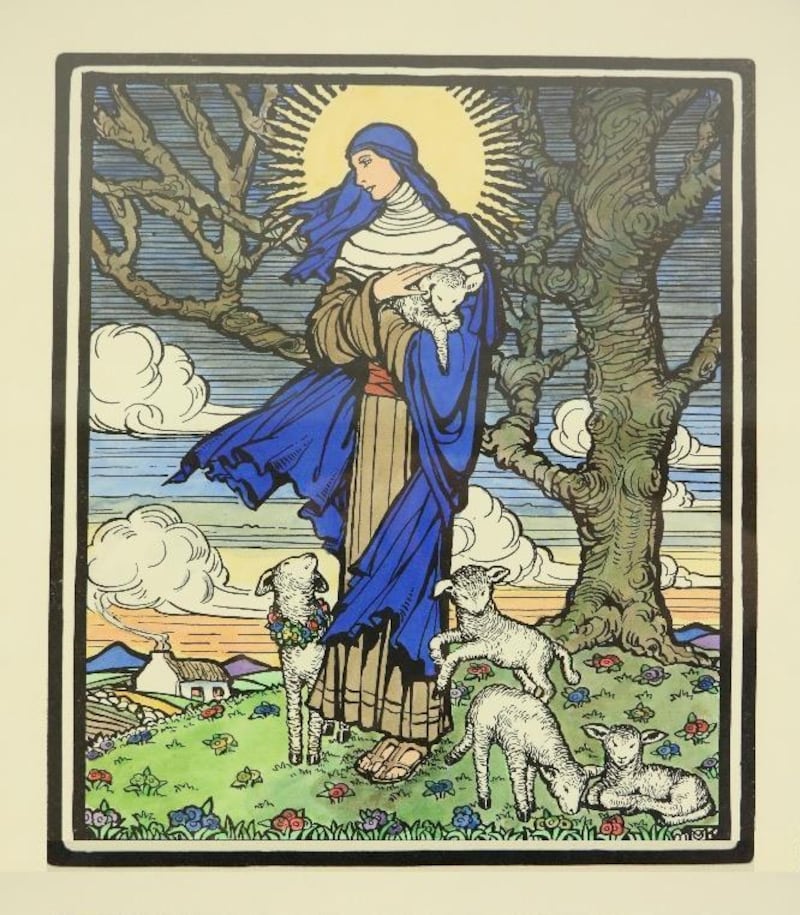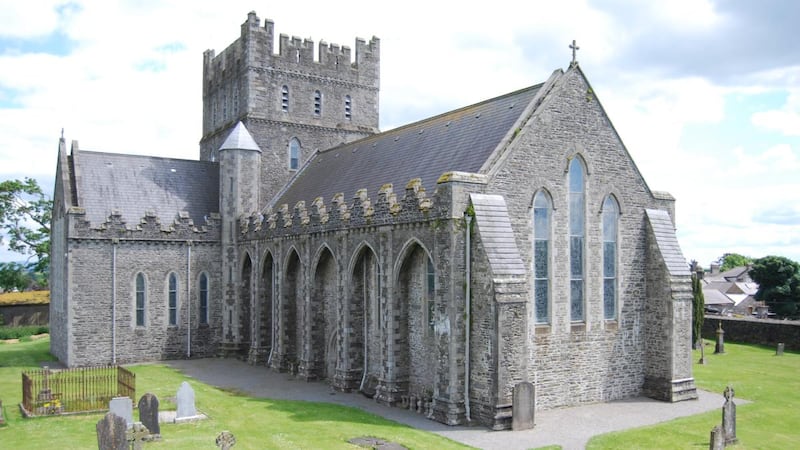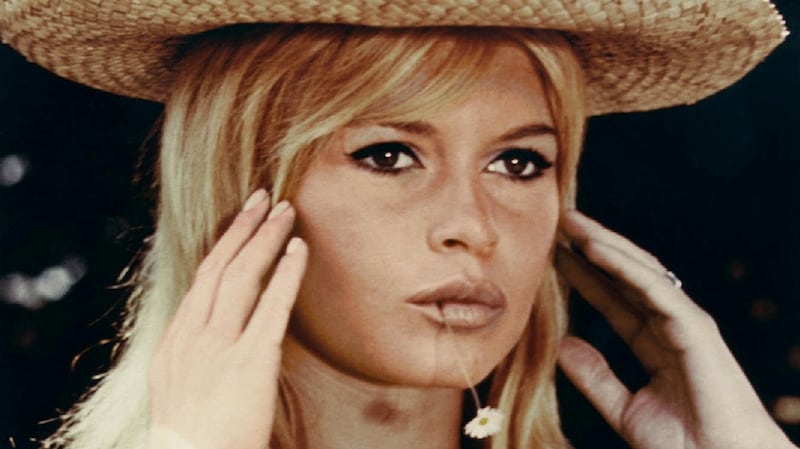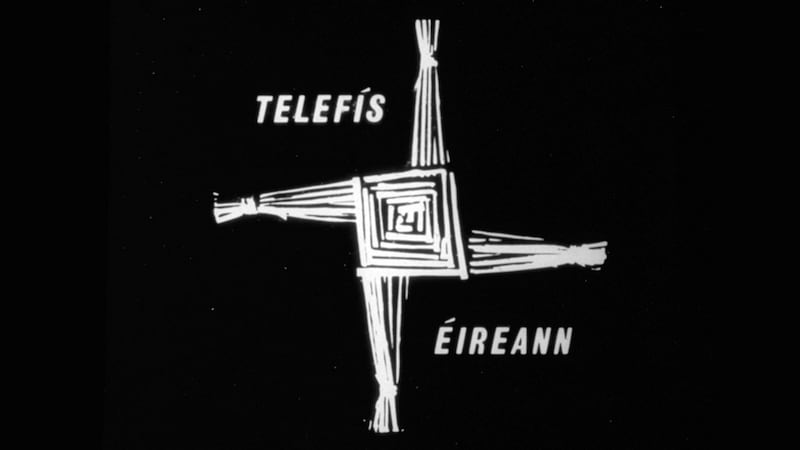Occasionally it strikes: wasn’t St Brigid a bit of a divil all the same? Her abiding mercy and concern for those less fortunate led her to give tons of stuff away in a bid to “relieve all wretchedness”. At one stage she had given away so much of his stuff to the poor that her father actually tried to sell her off as a slave to the king of Leinster. Parenting was different in the fifth century.
Both headstrong and holy from a young age, Brigid managed to get out of various scrapes – often the result of that generosity – with the aid of miracles that magicked up pigs, sheep, cattle, bacon. Some of the stories about Brigid’s life have a mythical or even comical, mischievous quality, but the saint had quite the significant life, and quite the influence.
“Disobedient girls get a very bad press. Frequently their disobedience becomes their strength as they get older. And that was exactly the same with Brigid,” says Una O’Hagan, a former RTÉ newsreader, and co-writer with her husband, former radio producer/presenter Colm Keane (who has died since this article was first published), of The Book of St Brigid. The early Christian saint, a woman who seemed to go her own way, is seen as an early feminist, and still inspirational.


Brigid’s Cross aside, many of us don’t know much about this accomplished woman, born around AD 450, and her long, productive life.
She was “a big revelation”, Keane says. “Then we looked around, and you find St Brigid’s GAA club, holy wells all over the country, parish churches, crosses, schools, women called Brigid or Bride or Breda or Bríd or Bridge, or Delia, a derivative. She’s everywhere, she’s all around us. She must have had an enormous, powerful personality. Everybody points out she was kind, charitable, humane, always concerned about the poor. To find that combination in somebody so successful is unusual.”
“She was,” says O’Hagan, “a hugely independent-minded character. She set up monasteries around the country. Kildare was one of the biggest. It was called a vast metropolitan city. She had a hospital there, a scriptorium – they farmed, they taught.”
As Abbess of Kildare, she managed up to 15,000 nuns. She was ordained bishop. She liberated Irish women from roles as slaves or bondswomen. She was a master brewer of ale, a farmer managing monastery farms, with a particular grá for sheep. She held more power in the Catholic church than any woman before or since, says O’Hagan.
Snake-banisher
Brigid is one of Ireland’s three patron saints, along with St Colmcille and the more famous snake-banisher. It seems hard to get a look-in with such showmanship and parades.
“Brigid had a bit of misfortune,” observes Keane, “in that she was up against St Patrick. There was always a bit of a rivalry, manifested in rivalry between Armagh, associated with Patrick, and Dublin, that Brigid – from Louth, and based in Kildare – was associated with. After the 12th century there was a major battle between the two powers for control of the Irish Catholic church. Armagh won.
“There was a second factor: Patrick was a man, Brigid was a woman. And from that period, the Catholic church became very male-dominated. She really was relegated into second position, though in terms of sheer popularity, her [alleged] powers as a miracle worker, the way she was perceived, she probably should have been the number one patron saint of Ireland. You could argue Patrick became the glory boy of the Catholic church. And Brigid was always in second place.”


Their book is neither biography nor academic work, but an accessible, easy breeze through Brigid’s life – as it emerges from records – and her influence, full of stories and varied connections. As well as being a significant feminist role model, she inspired the first tiered wedding cake, the first Buy Irish campaign, a league of decency in 1920, the original logo of Telefís Éireann (her cross) and famous figures from the Pirate Queen Grace O’Malley to Maud Gonne and Kathleen Lynn, Bridget Hitler to Brigitte Bardot.
They describe it as a non-religious book. In several books on religious subjects, Keane says, “I was trying to get behind the cant and rhetoric. There’s a huge interest in this area, if you’re honest about it, and if you approach it in a genuinely non-selling-a-line way.”
While it’s apparently incontrovertible Brigid was ordained bishop and remained one all her life (and subsequent abbesses of Kildare continued as bishops), for decades from the late 19th century on, the notion of a woman as bishop provoked conservative male rejection of her episcopal appointment. While Rev John O’Hanlon’s Lives of the Irish Saints ignored the subject entirely, others said the idea she was a bishop was preposterous, or that her ordination was a mistake or an accident or a misreading of the order. One doubter even claimed Bishop Mel of Ardagh was drunk when he ordained Brigid bishop.
Academic study confirms she was a bishop, citing early documentation, starting with Cogitosus, a monk of Kildare who wrote the oldest extant life of Brigid, and continuing with the great books including the Book of Lismore.
“They would grab at anything to deny it was possible that she was a bishop,” says Keane. “But I believe the old books, they were on the ball, and Cogitosus was a great man who knew what he was talking about, and he was very clear she was a bishop.”
A cloak of Brigid’s, now in Bruges, is purple, though her monastery wore white – a further indicator.
“Until around the 12th century women had a better, much more honest role in the Catholic church,” says Keane. “Women were rated and valued. Bishops, archbishops, other saints came to visit Brigid, had respect for her. The church became a male enclave and everything was transformed around the 12th century.”
Mercy and humility
From the stories retold in their book, Brigid combines mercy and humility with great power. Keane says: “She stood up and was counted, and she achieved. She was also Irish. So for the women workers in Jacob’s during the 1913 Lockout, they saw a poor woman could achieve things they wanted to achieve. She was the perfect role model for them.” During the suffragettes’ campaign in London in January 1913, they were “firing phosphorus bombs into postboxes, shattering panes of glass in Houses of Parliament. Then, come the first of February, Brigid’s Day, and they said, no more of that, headed to their churches and prayed to Brigid for guidance and support.”


As representations of her indicate, she was keen on sheep. The feisty Brigid is said to have kept St Brendan – "a big saint hero, an old sailor, a tough guy" – waiting as she returned from minding her flock. "It's very telling she made him wait." He'd travelled from Kerry to ask Brigid an important question: "How often do you think of God?" She replied with a question: "Well, how often do you think of God?" He said, "I hardly go past seven furrows without thinking of God." She said, "I never go a moment without thinking of God."
Hints of divilment again, perhaps.
Brigid is published by their own imprint. There’s a story there too. Years ago, out in Youghal, near Capel Island, Keane, who’d written several books, complained about publishers. At home, their then 10-year-old, Sean, wrote a constitution for a new company, Capel Island Press. “He said, quite cutely, Dad can do the writing, and I’ll handle the money.” Years later, after Sean died from cancer aged 20, “I was in a bad way, and Una suggested, ‘Colm, you should write a book.’” Capel Island has since published 13 of their books, many of them bestsellers. They think of him every time they see the name. “It really is Sean’s great legacy to us.”
The book was written through lockdowns. “Around January it felt we were never going to see light of day,” says O’Hagan. “When we got to February 1st we really felt the tide was turning. No coincidence it was Brigid’s day. She brings a lot of life, a lot of light, a lot of meaning. And I think people are searching for that.”
The Book of St Brigid by Colm Keane and Una O’Hagan is published by Capel Island Press











